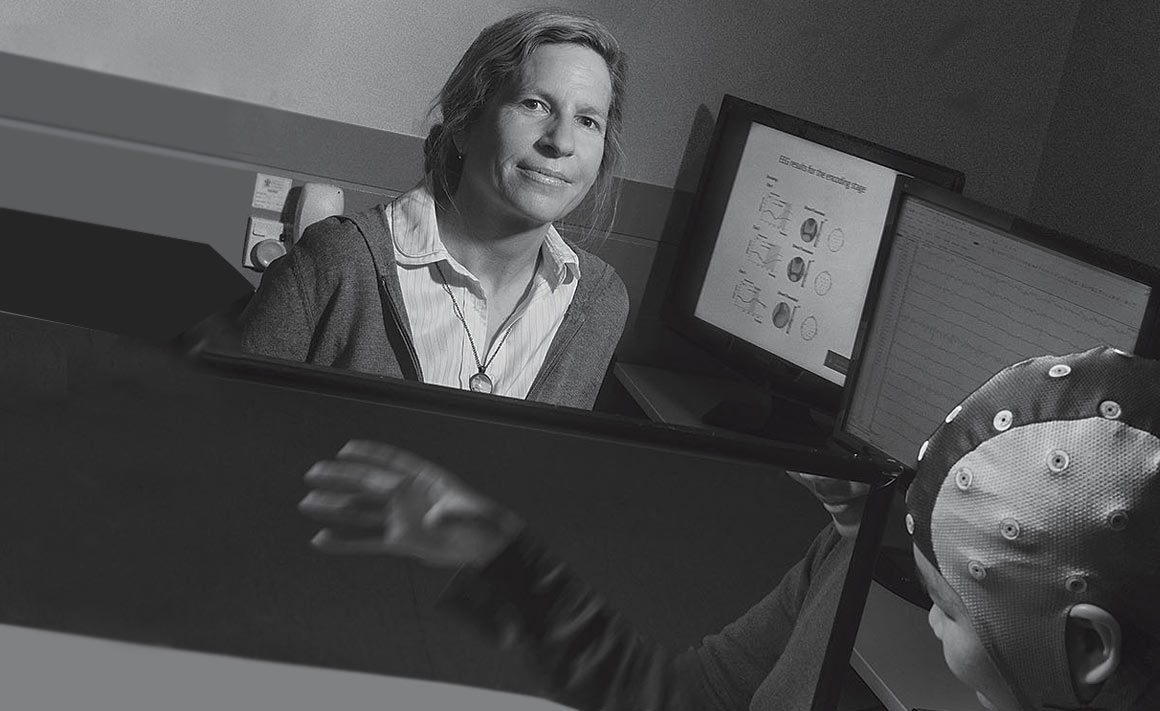
Movement perceptions stimulated by reflections in a mirror box may offer therapy potential for those suffering from sensorimotor difficulties.
Professor Liz Franz's passion for understanding human actions has led to valuable new insights into brain organisation – insights that have the potential to help people experiencing problems in everyday hand actions, such as getting dressed and preparing and eating food.
Franz's research uses a mirror box similar to that developed about 20 years ago in neuroscientist Dr Vilayanur Ramachandran's laboratory when she [Franz] was conducting related research involving people with phantom limb experience.
Mirror boxes are simply that: a box with a mirror on one side, positioned to reflect a person's limb. Looking in the mirror gives the perception that the other limb is moving, even if that limb is completely stationary.
Perceptions and motor actions aren't that different in terms of brain processes, and sensory inputs (such as the mirror reflection) might have a direct impact on motor processes.
Franz explains that, normally, the opposite cortex of the brain is activated during typical limb movement – when the left hand moves, the right side of the cortex is activated.
However, recent work by Franz and PhD student Ranjan Debnath, published in the journal Cortex, found that motor areas of the brain become active in association with the hand perceived in the mirror, even when the actual hand on that side did not move at all.
They assessed changes in activity of brain regions during use of the mirror box, using EEG to measure brain activity. This showed perception of biological movement of one's own hands seems to directly activate motor regions of the brain.
Franz's team took this idea further to capitalise on the uncanny perception of ownership that many people experience when viewing their own hand actions in a mirror.
“If we could harness that perception, perhaps there is a way to create a more sustained feeling of movement and associated motor activity and, maybe, we have something to offer those who are developing therapies for people with movement difficulties,” Franz says.
In a study, published recently in Restorative Neurology and Neuroscience, the researchers instructed participants to move a foot pedal each time they experienced a sensation such as ownership of the reflected limb. That locks the analysis of brain activity to the time of the perceptual experience.
The neural activity associated with a perceptual change of ownership can essentially be captured.
“We attempted to do this and found very encouraging results. In those early days of mirror box work we didn't have the brain imaging methods and analyses to conduct detailed studies on the brain's response to the mirror perception. Now it seems our findings are consistent with what some people are seeing in therapies that show successful results.
“Consistent with our view that motor actions and perceptions might not be all that distinguishable in their brain processes, these findings suggest that sensory effects such as the visual input from the mirror might directly activate motor regions through effects of perception."
“We are working toward a better understanding of the precise brain changes that occur with such perceptual changes, a challenge that excites and ignites us.”
Originally, from Flagstaff, Arizona, USA, Franz has been working in the University of Otago's Department of Psychology since 1998, researching psychological and neural processes associated with action planning involving the hands, and teaching principles of psychological research and cognitive neuroscience.
She says she has always had a curiosity about brain function.
“It's exciting to know that growing knowledge about brain representation of hand actions could translate into new therapies across a range of different areas that target those people suffering from a range of sensorimotor conditions.”
Funding
- University of Otago
